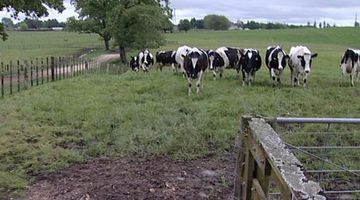Dr Selai Letica explains her work in managing the risk of nitrogen loss to the atmosphere through the use of nitrification inhibitors.
Jargon alert: Denitrification is a part of the nitrogen cycle. Nitrate is converted back to atmospheric gaseous nitrogen – with the potential for nitrous oxide emissions. Nitrous oxide is a greenhouse gas.
Transcript
DR SELAI LETICA
Primarily my research is about finding out how we can reduce nitrous oxide emissions through the use of nitrification inhibitors. Nitrification inhibitors work to prevent nitrous oxide emissions quite indirectly. Basically, the job of the nitrification inhibitor is to stop or slow down the process of the conversion of urea nitrogen or ammonia nitrogen into nitrate nitrogen. What happens is, if you starve the denitrification microbes of their food source, which is nitrate, they have no nitrate to denitrify, so you stop that loss pathway.
We need to better understand how climate and how soil types interact with these nitrification inhibitors so that we can increase the efficiency at a smaller scale for farmers. What we do know is that the warmer the soil is, generally the faster the inhibitor will break down. That may mean that people farming in warmer regions may need to reapply their inhibitor more frequently than say a farmer in Southland. It’s also fairly mobile, so regions of high rainfall may also need to think about the timing of application so that they don’t experience huge losses of the inhibitor application if it’s a wet season, or they avoid those wet conditions.
Acknowledgements:
Dr Selai Letica, AgResearch, Invermay
Professor Louis Schipper



